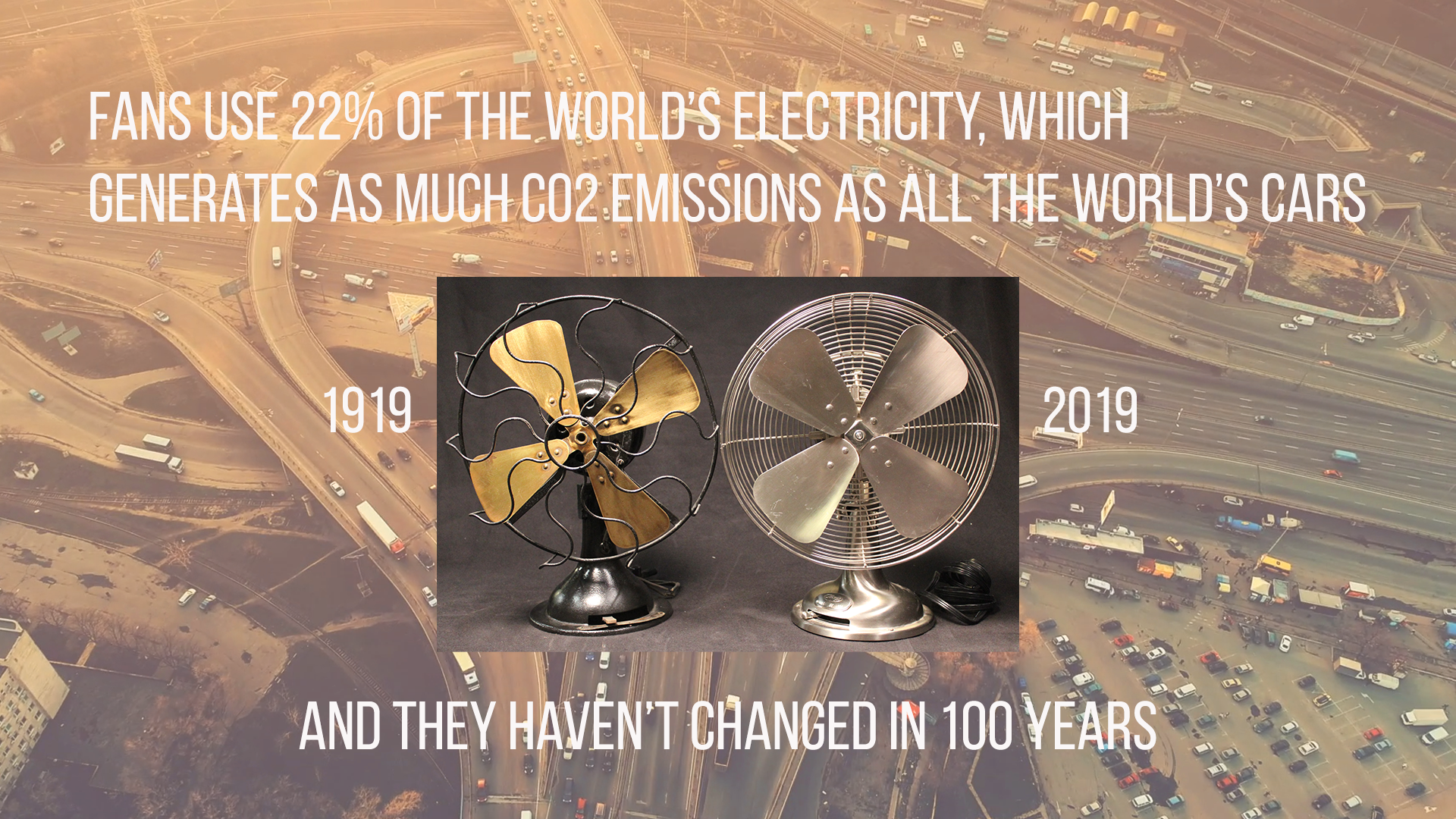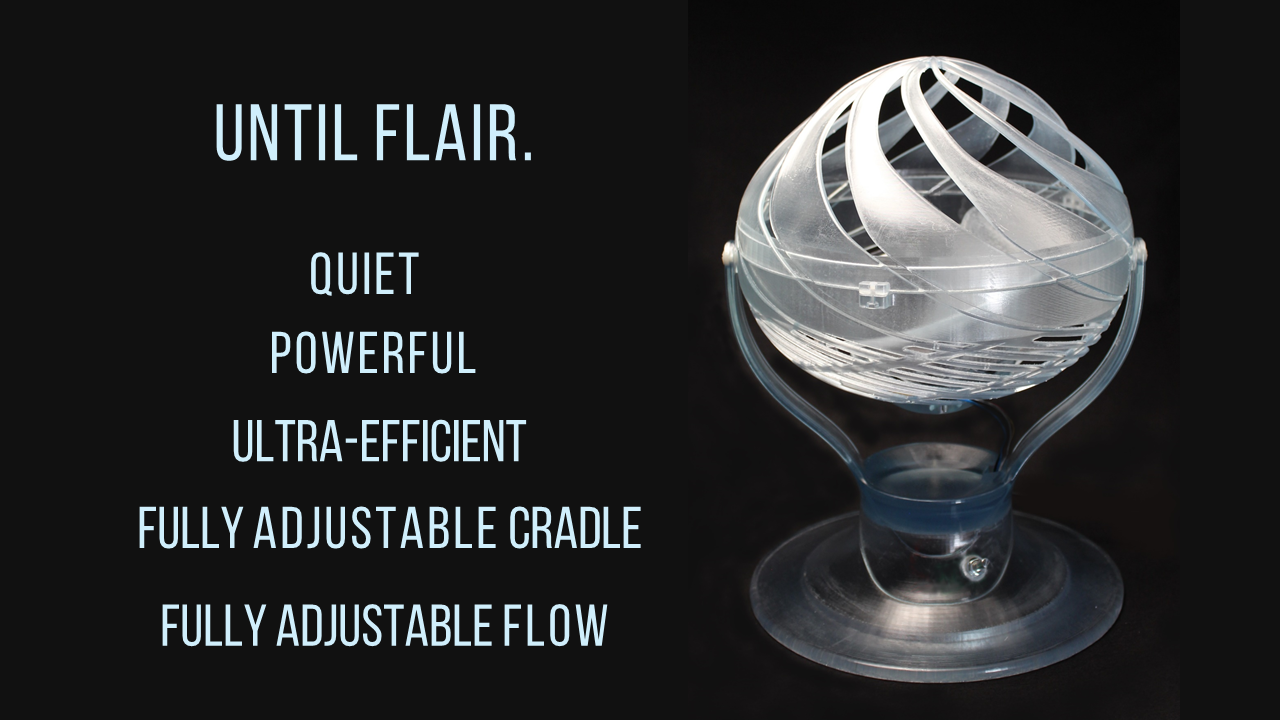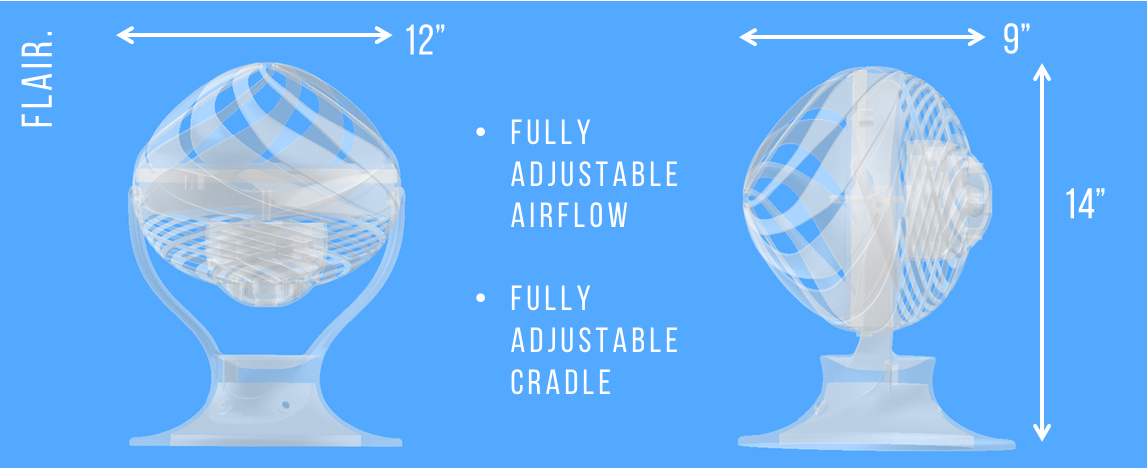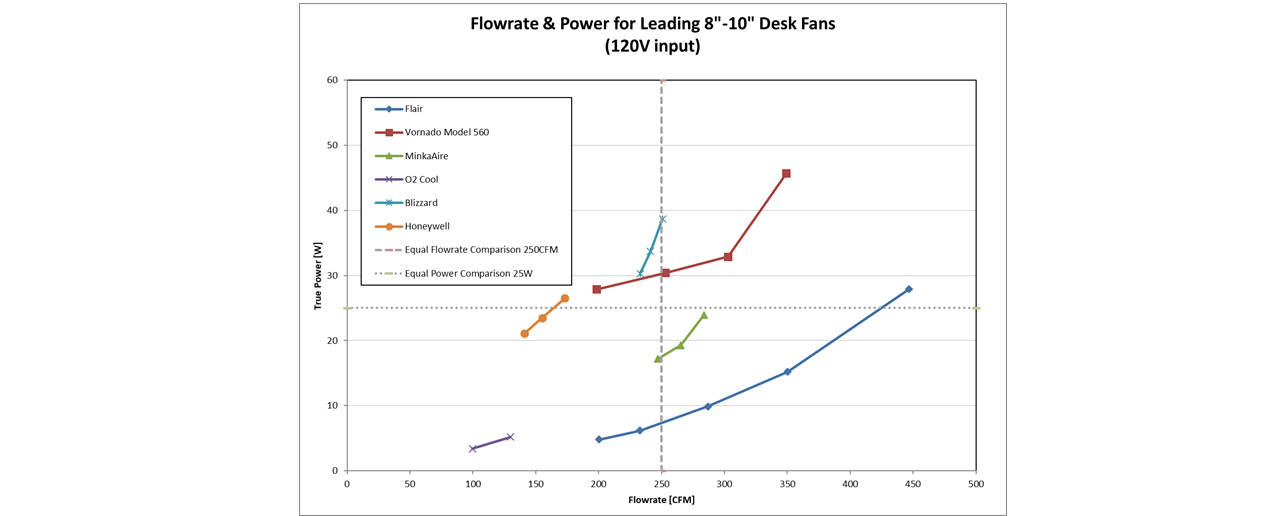Flair is a nature-inspired ultra energy-efficient and quiet portable fan.
Although fan manufacturers make all sorts of efficiency claims...
Data doesn't lie. Flair has been tested against leading competitors and uses up to 85% less electricity than conventional fans of the same size. Even those few fans with expensive, high-efficiency motors use 50% more electricity than Flair.
For just the energy of an LED light bulb (6 watts), Flair can circulate an average-sized room the number of times per hour recommended for good health. It can circulate very large spaces for less than 28 watts.
Flair is powerful.
Air velocity magnitude is an indicator of how much air you feel from a fan. You can see from the red (fastest) flow in these images that Flair produces much more air velocity.
With around 800 million portable fans in the world, ultra-efficient and powerful Flair fans have the potential to make a real impact on carbon emissions and save billions of dollars in energy.
That's good news, but it's only part of the story.
Air-conditioners and heaters are heavy users of power, consuming nearly 50% of household energy. According to the Department of Energy, the average American family spends half its electricity bill on heating and cooling (more than $1,000). Climate change is only increasing this demand.
The problem is that in the winter, expensive heated air accumulates near the ceiling while you sit in colder air, and in the summer, cooler air sinks to the floor while you sit in warmer air. Flair's ring-vortex circulation destratifies the air, so you can change your thermostat and save more than 25% of your heating and cooling costs per room. Some other fans try to do the same thing, but they're noisy and inefficient.
You can feel the quiet.
Noisy fans are an indication of inefficiency. Flair is so quiet on lower speeds that people can't even tell it's on - ideal for light sleepers and so many of us who can't stand the noise of a buffeting fan.
We used state-of-the art engineering tools to optimize Flair, including our airflow and sound test chambers, supercomputers, and computational fluid dynamics.
We’re starting commercialization of Flair in Fall 2020 - stay tuned for updates on product availability!
REFERENCES
At PAX, we take pride in scientific and engineering excellence.
We analyzed a great deal of data as we developed Flair. Our references are explained below, including links to outside sources.
Fans use 22% of the world's electricity…
J. Cermak and J. Murphy, Select Fans Using Fan Total Pressure To Save Energy, ASHRAE Journal
…which generates as much CO2 emissions as all the world’s cars. (More than half of that electricity is wasted through poor design.)
Flair has been tested against leading competitors and uses up to 85% less electricity than conventional fans of the same size.
A sample of test results is shown below. Additional data is available from PAX Scientific.
For just the energy of an LED light bulb (6 watts), Flair can circulate an average-sized room the number of times per hour recommended for good health.
With around 800 million portable fans in the world…
The US Consumer Product Safety Commission estimated that there are 200 to 240 million portable fans in US households. The US Census Bureau estimates that approximately 21 million portable fans are sold each year in the US. China is the largest producer of household electric fans at 159 million units per year as of 2013.
Flair's ring-vortex circulation destratifies the air, so you can change your thermostat and save more than 25% of your heating and cooling costs per room.
It's truly possible to save a billion tons of CO2 emissions every year - just from better fans.
We developed our biomimetic solutions 20 years ago and have made huge efforts to have industry apply them. In that time the energy generated to run fans has dumped more than 140 billion tons of CO2 emissions into the atmosphere.
According to the International Energy Agency (IEA), the world’s power plants produce 33.1 billion tons of CO2 annually. 22% of 33.1 billion tons of CO2 equals 7.282 billion tons of CO2 (attributable to the 22%-23% of global electricity used by fans). If Flair technology is rolled out to the global fan inventory and improves average fan efficiency by just 20%, we could save 1.45 billion tons of CO2 emissions per year.









